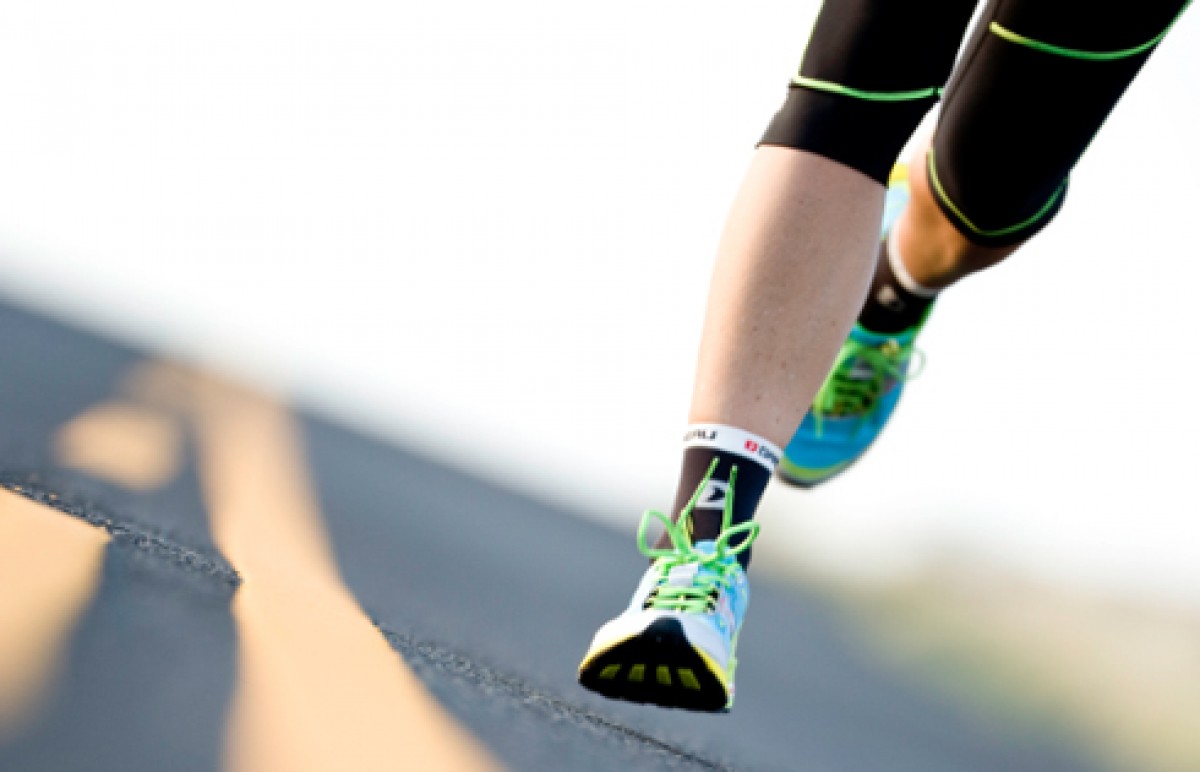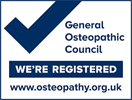Footstrike When Running

There is ongoing debate about the merits of exactly which part of your foot should land on the ground first when running. This not only throws up some interesting questions about running technique itself, but from a therapist’s point of view has wider implications about the role of artificial means of support in all forms of exercise and activities of daily life.
The 3 general categories of the foot strike are: Forefoot (landing on the ball of foot); Midfoot (landing with the toes pointing straight ahead); or Heel (self-explanatory). Go online and the majority of articles are in favour of either mid- or forefoot striking and I’d agree. Logically it makes perfect sense, as we have a natural shock absorption system of ligament, tendon and muscle (collectively called soft tissue) running from the ball of the foot, under the sole of the foot, round the heel and up the back of the calf. If we land on the heel this system is taken out of action and the force of the heel striking the ground is transferred further up leg and must then be absorbed in the knee, hip, pelvis, lower back or even higher.
It is natural to land on the heel in walking (as opposed to running) and the foot is perfectly designed for this as we have a soft tissue structure in the heel called the “fat pad” which acts as a shock absorber. Modern running shoe manufacturers have expanded on this concept and “super padded” the area under the heel, allowing us to land squarely on our heels when running by providing us with enough shock absorption to mask the discomfort of the impact as the heel hits the ground at speed, but not enough (in my experience) to fully dissipate the forces travelling up the limb as described above. To illustrate, imagine trying to jog or move forward at anything faster than a brisk walking pace while landing on your heels on hard ground in bare feet, it would be horrible due to the discomfort of the unpadded heel hitting the ground, and the clunking sensation you get up the rest of the leg. We instinctively switch to landing on the forefoot or midfoot if we have to move at speed in bare feet, this is imprinted in us from childhood and doesn’t need to be taught. Nevertheless the average adult recreational jogger will land on their heels due to the padding shoes provide. So have we simply forgotten how to use our own soft tissue shock absorption mechanism due to the ubiquity of padded heels in modern shoe design; or were modern shoes designed because since the beginning of time everyone has been complaining about the pain of landing on their heels when running? It’s of course the former scenario, as until modern shoes provided us with super padded heels we simply weren’t able to heel strike. It’s arguably an over-engineered solution to a problem that didn’t originally exist.
It’s beyond the scope of this article to instruct anyone exactly how to switch from heel to forefoot striking (get in touch or book an appointment to discuss this further) but I’d certainly advise any recreational runners just to give it a try. To begin with go with your instinct and do whatever feels comfortable, simply have an awareness that you are now landing on an area of the foot further forward than the heel itself. It’s certainly not running on “tiptoes” and your heel may actually lightly contact the ground at some point in the gait cycle but have an awareness that you are now avoiding “crashing down” on the heel. By using this instinctive avoidance of heelstrike, you shall begin to use the calf muscles correctly, but as they probably haven’t been used in this way for some time they will inevitably ache as a result. This is absolutely fine as it is just due to delayed onset muscle soreness (DOMS) and would manifest in any muscles performing tasks they weren’t used to; we can take positives in the short term that it shows the correct structures are being “woken up” from being neglected. Therefore treat it like any form of new exercise, build it up gradually even if you are “cardio fit” enough to run long distances heelstriking, or you risk pulling a calf muscle. You would instantly know the difference between this and DOMS and it could put you out of action for weeks. From personal experience I’d recommend firstly to try mid/forefoot striking for a few minutes in the middle of your run, when the calf muscles have been warmed up but before they’ve fatigued too much, and then very gradually over the course of several months increase the time spent on mid/forefoot, still with a “warm up and cool down” phase at the beginning and end of your runs in your normal style. Your calves will inevitably be achy a day or two after until the muscles get used to the extra load so be sure to have a good stretch as soon as possible after your run.
I can’t unfortunately guarantee an overnight improvement in you times and/or running related aches and pains, but what I can guarantee is that you will have a much better foundation on which to improve on these with training and/or osteopathic treatment; as you will be using the correct tools for the job developed from the time our ancestors began walking on two legs, as opposed to a rubber pad filled with air or gel invented in the last century.











